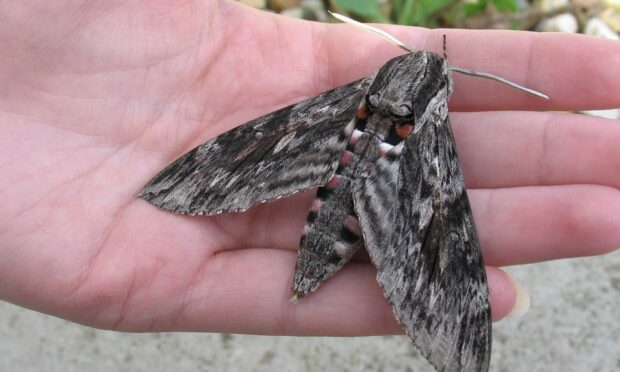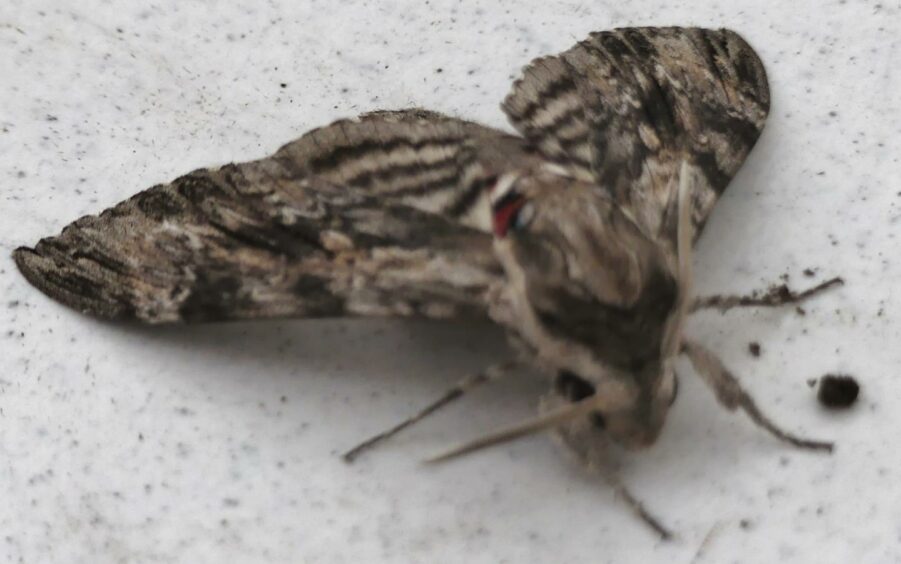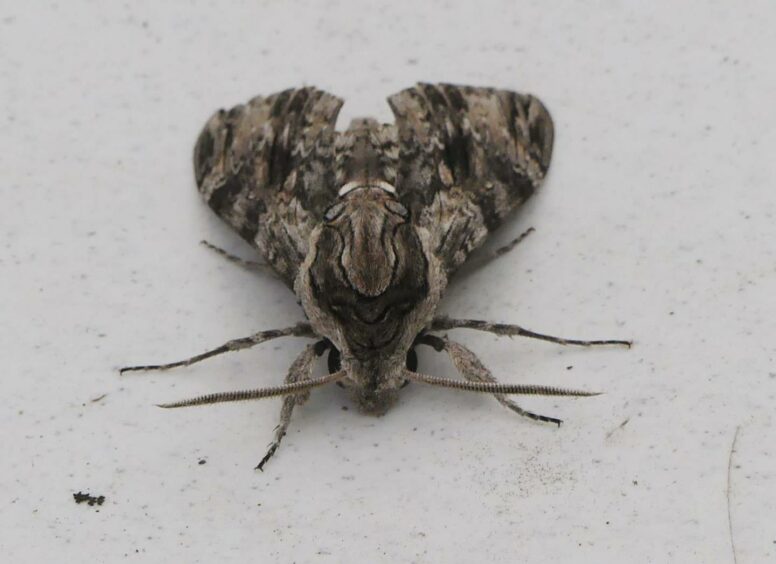A huge hawk moth has got experts in a flutter after being recorded in a Perthshire village for the first time in more than a century.
The striking convolvulus hawk moth, Latin name Agrius convolvuli, turned up in Dunning to the delight of local resident Dorothy Anderson.
Dorothy, 87, was so taken with the creature she popped it in a jar so her 19-month-old great-grandson could meet it.
‘It was beautiful’
“It was a lovely wee beast,” she said.
“But it was big. I would say the body was fully two inches long and when opened the wingspan easily three inches.
“The body had pink spots. It was beautiful.”
Dorothy let her great-grandson, little Blake Harris, hold the moth.
“He liked it. He didn’t jump or anything. He likes insects.”
She enlisted the help of friend Arthur Bruce to identify the creature, which she described as being like “a wee bird”.
Arthur, 76, contacted Butterfly Conservation to see if the hawk-moth was a “usual visitor to our shores”.
Pink spotted hawk-moth last recorded in 1904
He said: “The butterfly conservation society said that they would register the sighting to their person who records all sightings.
“It turns out that the last reported sighting of this moth in this area was 1904.”
The hawk moth can have a wingspan of nearly five inches.
Although well camouflaged against wood and bark, when it flexes its wing it displays vibrant pink markings.
Dorothy described how she found the hawk moth on the door of her greenhouse.
Her first thought was “Oh my goodness, what’s that?”
She later let the hawk moth free.
“I don’t know where he’ll be now,” said Dorothy.
“I just hope if somebody finds him, they’ll look after him.”
Richard Fox is associate director of recording and monitoring at Butterfly Conservation.
He said although the convolvulus hawk moth is a regular visitor to the UK, it is mostly seen around the coast of south and east England.
“They are very large moths and have an unusually long proboscis which enables them to feed on tubular flowers, such as the tobacco plant, petunia, lillies and phlox, which many other moths cannot reach.”












